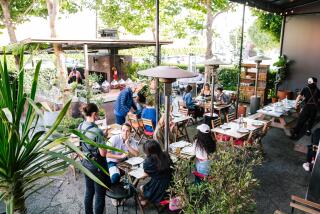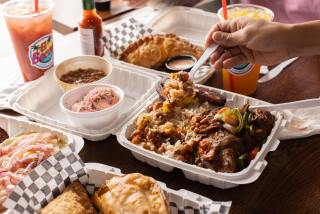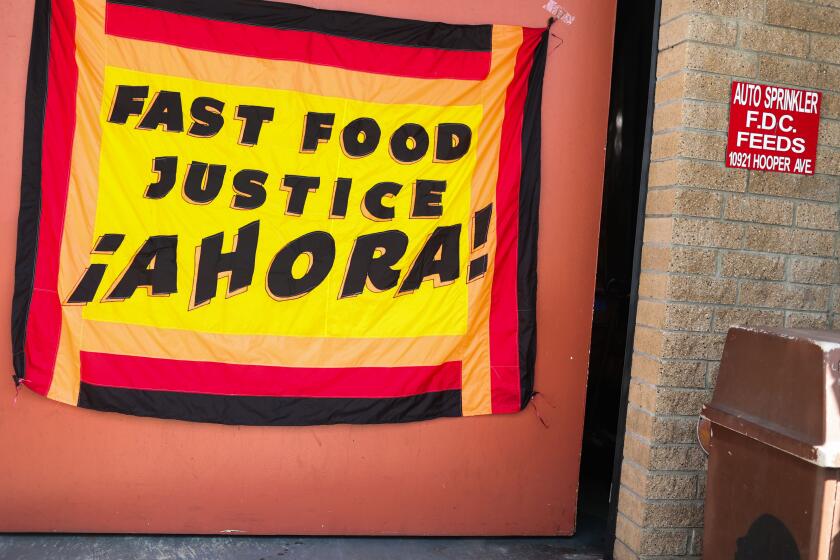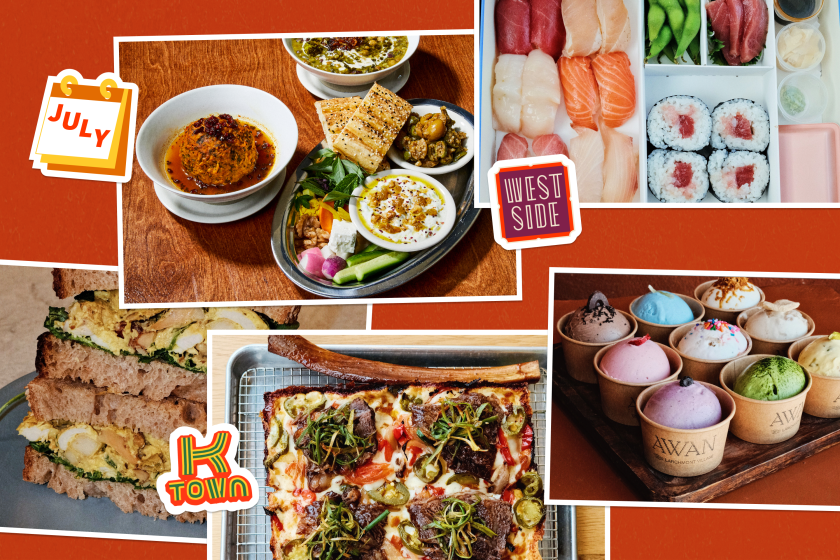A Beguiling Beaujolais : ‘As Beautiful as a Vase of Fresh-Cut Flowers’
A PERENNIAL leading question in the wine industry is, what will the next “hit” wine be? My Times colleague, Dan Berger, recently concluded in his column “that Beaujolais is destined to be the next fawned-over wine in the United States, since it’s the one red wine that can take a freezing and keep on pleasing.”
Beaujolais does take to chilling nicely, and, perhaps more than anything else in its favor, has a youthful freshness that gives it an instant accessibility and an undeniable charm; its bouquet suggests fruit and flowers. And there’s no need to age Beaujolais--which fits the American habit of pouring a wine only hours after purchase.
Charles F. Shaw, who produces, in the Napa Valley, one of California’s most honored wines of Beaujolais traditions, says: “There’s nothing pretentious about it. Buy a bottle, take it home, pull the cork and pour it--and it’s wonderful. It’s fresh and beautiful--like a vase of fresh-cut flowers; there’s no mystery to the enjoyment.”
It was the Cru Beaujolais, those finer editions of this popular French wine, that drew Shaw into the world of wine making. A West Pointer who chose to not become a career officer, he left the service, earned an MBA in banking at Stanford and took his first assignment in international banking in Paris. A Swiss friend took him to Beaujolais, where the spell of those nine classic growths, Moulin-a-Vent, Julienas, Morgon, Chenas, Fleurie, Saint-Amour, Cote de Brouilly, Brouilly and Chiroubles, fascinated him.
The traditions of making the wine, beginning with whole clusters of grapes in carbonic maceration, led to research into and appreciation of the noble Gamay, banished from the Cote d’Or by Philip the Bold in 1395 when that Duke of Burgundy believed that its over-generous yield, beyond that of the shy-bearing Pinot Noir, threatened the quality of wine making in Burgundy. This first viticultural edict in history would be the founding wellspring of what we now know as Beaujolais, the region to which the Gamay was banished and where it would thrive for many centuries to come.
Shaw returned to California and found the Crocker vineyard--near Saint Helena and planted to Gamay Beaujolais--for sale. Since 1979, when he took over this idyll of Beaujolais in California, he has become the wine’s most ardent advocate and scholar, with custom-designed fermenters for the carbonic maceration techniques. But even his vineyard has clones of Gamay from his inquisitive explorations, including the Gamay Geoffray from Fleurie.
In Burgundy, under control regulations, it is permissible to add up to 15% of Aligote, Gamay Blanc, Pinot Blanc or Chardonnay to the finished Beaujolais Cru wine. Together, we checked out the lineage of this vine called Gamay Beaujolais, which covers 98% of the Beaujolais region. In the “ampelography” of P. Galet of Montpelier, the Gamay constitutes “an important group with numerous selections.” Gamay Beaujolais leads off with its own four synonyms, including the Gamay Geoffray that Shaw brought to Napa from Fleurie and is now propagating. There are more than 30 variant clones listed by Galet.
And now a tip: Chuck Shaw has become perhaps the first vintner in California to blend a Beaujolais--his 1987 Napa Valley Gamay Beaujolais-Domaine Elucia--with 10% Chardonnay. The result is spectacular. There won’t be enough to start the next tidal wave of consumer devotion, but I’ll bet it’s a sellout when it debuts in June at $7.50. The taste is indeed as beguiling as that vase of fresh-cut flowers.
More to Read
Eat your way across L.A.
Get our weekly Tasting Notes newsletter for reviews, news and more.
You may occasionally receive promotional content from the Los Angeles Times.






